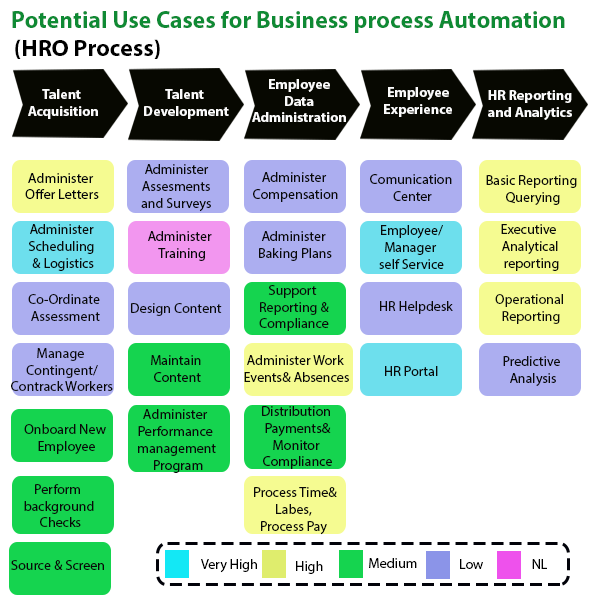In this article, you will learn how to use if else condition in laravel select query using db raw. We require many times to add if condition in laravel eloquent query using when case statement. So, In mysql, if you want to add else if condition then mysql provided when case statement. You'll see that the current handle() method is fetching a certain number of fields and converting the result to an array. By default, results come from Eloquent as an Eloquent Collection, so this function converts them to an array in order to use that data within the table() method. The migration runs the up() method when executed with the artisan migrate command.
This is where your table definition goes, and by default it creates an id primary key field and two timestamp fields , defined with the timestamps() Schema method. Those fields are automatically filled by Eloquent when a model is created and updated, respectively. The down() method is called when the migration is rolled back with the artisan rollback command, and typically executes code to drop the table or revert structural changes. The updated code uses an object-oriented approach for setting up the properties for the LinkList and List models that are translated into table columns by Eloquent. The final line of the for loop uses the $default_list reference to the links table, which is accessed via the method links(), to save new links within that list.
To improve this code, you'll change the foreach loop to use Eloquent models instead of querying the database directly with the query builder. You'll also have to create a default list of links (called $default_list in the following code) before the loop is started, so that you can reference this list in each new link created. In this project-based series, you'll learn how to make database queries and how to work with relationships in Laravel Eloquent. The demo consists of a single page application that shows a list of links or bookmarks.
You'll improve the application by adding new models and defining new relationships between them that will extend the current database structure. We now come to another type of relationship — the many-to-many between orders and items. Recall that we already have created an intermediate table called item_order that stores the mapping between the primary keys.
If this much has been done correctly, defining the relationship and working with it is trivial. As per the Laravel docs, to define a many-to-many relationship, your methods must return a belongsToMany() instance. When working with database query results, it is often useful to obtain only the total number of rows in a result set, instead of pulling the full dataset content with a regular query. Eloquent offers a few different aggregate methods that return a scalar number instead of an Eloquent object, including count(), max(), and sum(), among others.
These are all made available through the inherent query builder that is built into every Eloquent model. Notice that this code does not use the Link model and instead uses the query builder to insert new links in the database. This is a different way of working with database records in Laravel that doesn't depend on Eloquent models. Even though this works well, by using Eloquent models you'll have access to a series of helpful methods and shortcuts to make your code more concise and easier to read. The following code will ask the user to specify a list or leave it blank to use the default list. Then, it will try to locate the list or create a new list using the specified slug in case the list doesn't exist yet.
To retrieve a list provided by the user, this code uses the firstWhere method to find a list based on its slug field. Finally, it saves the new link using the links() relationship that can be accessed from the LinkList object. Here we will learn about how to use if condition in laravel select query. We can use mysql case when statement with db raw query in laravel. So if you want to use mysql function then you must have to use db raw function.
In this example i will show you how to use laravel select query with if condition. You'll now create a second route to show lists of links based on a list slug. A slug is a short string that is typically used to build user-friendly URLs. The new route must query the database's link_lists table for a list that has the provided URL parameter as its slug field. If a list with that slug cannot be found, the application should inform the user with an HTTP 404 or not found error. In a previous section of this series, you set up two models for a one-to-many relationship between the LinkList and Link models.
In this section, you'll learn how to insert links and lists in the database using Eloquent models. To limit the scope of this work, you'll use custom Artisan commands to manage links and lists from the command line, which won't require a web form. We will learn how to use if condition in laravel select query.
We can use mysql case when statement with db raw in laravel. If you want to use mysql function then you must have to use db raw function. In this example i will show you laravel select query with if condition.
In an application there is often a relationship between the database tables. For instance, a blog post may have many views and reacts, an order can be related to the customer who placed t. Eloquent make the management of relationships in our application very easy. In this article, we will talk about laravel selectraw example.
You will do the following things for laravel eloquent selectraw. Next, we will create three models so you can experiment with eager loading nested relationships. The example is simple so we can focus on eager loading, and I've omitted things you might use like indexes and foreign key constraints. When working with one-to-many relationships in Laravel Eloquent, you have a few different options to save related models. In most cases, you'll need to first set up the model representing the one side of the relationship, which in this demo is the LinkList model, and save that to the database. After doing that, you'll be able to reference this model when setting up the many side of the relationship .
That also means you'll need to first have one or more lists in order to be able to create links. If you look at your app/Console/Commands directory, you'll notice that there's already a class file named LinkList.php. This is not to be confused with the Eloquent model you just created. This class contains a CLI command that lists all the links in the database via artisan. Laravel eloquent builder has rich features to modify the query. In some cases we wanted to modify the select statement on basis of few conditions and wanted to add some select statement on condition.
So in this article we will learn to add multiple select in laravel eloquent by preserving the last select statement. Once a model is defined, you are ready to start retrieving and creating records in your table. Note that you will need to place updated_at and created_at columns on your table by default. If you do not wish to have these columns automatically maintained, set the $timestamps property on your model to false. This app includes a Book model with a belongsToMany users relationship that uses a checkouts pivot table.
Each time a user checks out a book, a new record is created in this table, which includes the date in the borrowed_date column. To do performance tests, we have the latest stable versions of both Mysql and Postgresql installed with default settings on a Mac. To create tables on both, we used Laravel's migration file and switch between database connections via environment variables. When you are accessing an Eloquent model, the relationships for that model are not loaded by default.
Laravel lazy loads the relationships when you try to access them. This is great since it saves memory used in storing all that data. However, what if you know you will need all of the relationships? Let's set up some database migrations, models, and database seeding to experiment with eager loading.
If you want to follow along, I am assuming you have access to a database and can go through a basic Laravel installation. By eager loading, you can take many queries down to just one or two. Throughout this series, you have been adding new links to your demo application to test out several features from Laravel Eloquent. You may have noticed that the main index page is getting longer each time you add a new link, since there is no limit to the number of links shown in the application. In this section, you'll create a new route within the application to show links by list.
You'll also learn how to use the where() method in Eloquent to better filter results in a database query. Later in this tutorial series, you'll update the front end and main route code to show links organized into lists. For now, you'll use the command line to add, migrate, and validate your changes to the database and models. The foreignIdFor() method creates a foreign key column to the referenced Eloquent model. It uses default nomenclature to set up a field that is linked to the primary key field of the referenced table.
To get started, you'll need to create a model and a database table to represent a List of links. Then, you'll update the existing Link model and table to include the relationship between both models. Because the term List is reserved for PHP internals, you won't be able to name your new model with that term. Notice that we did not access the comments relationship as dynamic property. Rather, we have called the comments method to obtain an instance of the relationship.
The save method automatically adds the appropriate post_id value to the new Comment model. InLaravelthe database query builder provides an easy way to create and run database queries. It can be used to perform all the database operations in your application, from basic DB Connection, CRUD, Aggregates etc and it works on all supported database systems like a champ. The joining table has no primary key and in most cases contains only two columns — IDs from the two tables.
It's almost as if we removed the foreign key columns from our earlier example and pasted them into this new table. Since there's no primary key, there can be as much repetition as is needed to record all the relationships. Granted, the fidelity of this relationship is not guaranteed. For instance, there's nothing stopping me from adding 200 new users without adding a single entry to the accounts table. If I do that, I end up with a one-to-zero relationship! 🤭🤭 But within the bounds of pure structure, that's the best we can do.
There is little to no concept of continuous learning in the PHP world. The average developer is happy working with single-server setups using relational databases and issuing queries written as strings. Asynchronous programming, web sockets, HTTP 2/3, Linux , unit testing, Domain-Driven Design — these are all alien ideas to an overwhelming proportion of PHP developers. As a result, reading up on something new and challenging, to the point that one finds it comfortable, doesn't happen when Eloquent is encountered. In this tutorial, we will set up some example relationships and then walk through how queries change with and without eager loading.
In this guide, you learned how to update database records with Laravel Eloquent. You have upgraded the demo application to include a new command that allows users to edit existing links in the database. The database queries are now updated, but you still need to update your front end view to include code that will render the navigation bar. Laravel Eloquent has native methods to facilitate implementing pagination on database query results. Your index page now limits the number of links that are listed, so that your page isn't overloaded with content, and gets rendered in a shorter amount of time. While this solution works well in many cases, you'll need to make sure visitors can still access older links that aren't visible by default.
The most effective way to do so is by implementing a pagination where users can navigate between multiple pages of results. The sortDesc() method is part of the Collection class, a powerful Laravel utility class that works as an improved version of native PHP arrays. Instead of ordering results within the database query itself, this method will invert the order of a collection, so that the last item appears first in the collection. While that works well for smaller result sets, it doesn't offer the same flexibility as sorting the results in the database query itself. The demo application has a seeder class that imports links from a links.yml file in the root of the application folder. Next, you'll edit the many side of the relationship to include a reference back to the List model, so that links can access their respective list.
This is done with the belongsTo method from the parent Model class. This method is used to define the inverse side of the one-to-many relationship. The demo Landing Laravel application that you set up as a prerequisite for this series contains a single database table to store links.
In this tutorial you'll modify this initial database structure to include a second table, which you will use to organize links into lists. Notice the imageable_type and imageable_id columns on the images table. The imageable_id column contains the ID value of the post or user, while the imageable_type column contains the class name of the parent model. The imageable_type column is used by Eloquent in determining which "type" of parent model to return when accessing the imageable relation.
This allows you to pass in a UNIX timestamp, date string a date-time string or a DateTime/Carbon instance to the field when saving. To begin with, we've established that there's a one-to-many relationship between users and orders. We can confirm this by going to the orders' migration file and seeing the presence of the field user_id there. This field is what creates the relationship, because any relationship we're interested in establishing needs to be honored by the database first; the rest is just pure formality. In the code above, we are fetching all the orders from the data store, and then in the loop, we are trying to access the first_name property in the user relationship. Because the relationships are lazy-loaded, every time the loop runs, a new query will be fired to get the user relationship.
Hopefully, you learned a bit more about eager loading models and understand how it works on a deeper level. The eager loading documentation is comprehensive, and I hope that the additional hands-on practice helps you feel more confident with optimizing your relationship queries. When selecting data form the database, sometimes you need to make some extra filtering with results – with some if-else statements and similar.
With Laravel – you can achieve that with Accessor fields or just looping through results in PHP. But there is a more effective way – to move the filters to the database query itself. This code checks for the existence of multiple pages of results by accessing the paginator object and calling the hasPages() method. When that method returns true, the page renders a new div element and calls the links() method to print the navigation links for the related Eloquent query. You'll also include a chained call to the limit() method in order to limit the query results.
Finally, you'll use the get() method to obtain the filtered resultset as an Eloquent Collection. One of the biggest advantages of using an ORM system is the ability to manipulate rows in a database table as objects within your codebase. On the List model, which is the one side of the relationship, you'll set up a new method named links.


























No comments:
Post a Comment
Note: Only a member of this blog may post a comment.